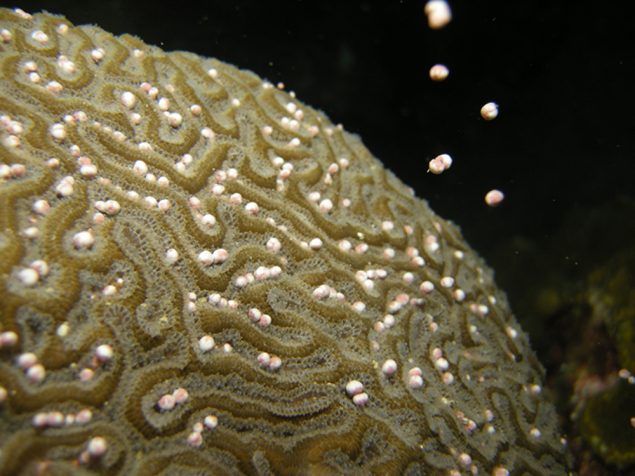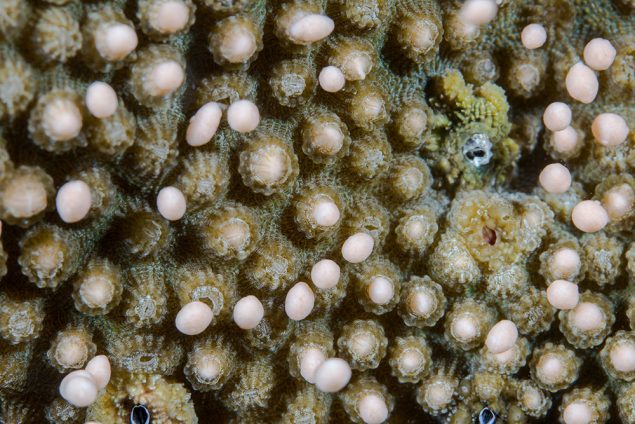Corals can reproduce either asexually or sexually. In fact, most reef-building corals use both reproduction strategies.
Corals reproduce asexually by either budding or fragmentation. Through budding, new polyps “bud” off from parent polyps to form new colonies after the parent polyp reaches a certain size and divides. This produces polyps that are genetically identical to the parent and continues throughout the coral’s life. In fragmentation, an entire colony (rather than just a polyp) branches off to form a new colony. This may happen, for example, if a larger colony is broken off from the main colony. However, the fragmented colony needs optimal conditions to settle on a substrate and grow.

In terms of sexual reproduction, coral larvae are either fertilized within the body of a polyp or in the water, through a process called spawning. In some areas, mass coral spawning events occur one specific night per year, determined by environmental cues, such as temperature, day length, and lunar cycles. The corals have to coordinate both within its species and amongst other species so that hybridization is limited. This broadcast spawning is an adaptation to the corals’ sedentary lifestyle since corals cannot move to make contact with one another and may separated by large distances.
Once in the water, larvae ‘swim’ to the ocean surface. If they are not eaten, they eventually settle to the ocean floor and attach to a hard surface. Once attached, they metamorphose into a coral polyp and begin to grow, dividing in half. As more and more polyps are added, a coral colony develops and eventually begins to reproduce.
Some coral species, such as Brain and Star coral, produce both sperm and eggs at the same time. For other corals, such as Elkhorn and Boulder corals, all of the polyps in a single colony produce only sperm and all of the polyps in another colony produce only eggs.



